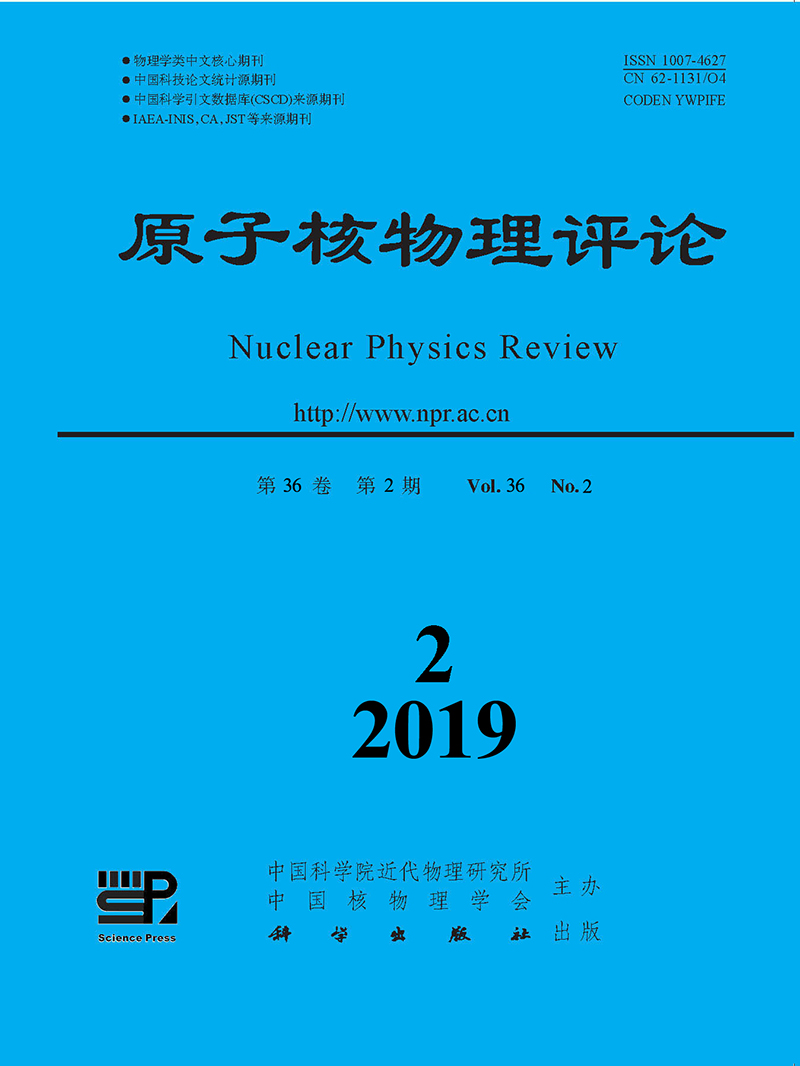|
[1]
|
REILLY D, ENSSLIN N, SMITH JR H, et al. Passive Nondestructive Assay of Nuclear Materials[R]. Nuclear Regulatory Commission, Washington, DC (United States). Office of Nuclear Regulatory Research; Los Alamos National Lab, NM (United States), 1991. |
|
[2]
|
WANG Xiaozhong, JIA Xiangjun. Atomic Energy Science and Technology, 1998, 32(3):256. (in Chinese) (王效忠, 贾向军. 原子能科学技术, 1998, 32(3):256.) |
|
[3]
|
ZHAO Deshan, CHEN Qi, CHEN Xianglin. Nuclear Electronics and Detection Technology, 2004, 24(6):726. (in Chinese) (赵德山, 陈琦, 陈想林. 核电子学与探测技术, 2004, 24(6):726.) |
|
[4]
|
SPRINKLE J. Passive Nondestructive Assay of Nuclear Materials, NUREG/CR-5550, United States Nuclear Regulatory Commission, 1991:435. |
|
[5]
|
KRICK M S, MENLOVE H O. High-level neutron coincidence counter (HLNCC):Users' Manual[R]. Los Alamos Scientific Lab, 1979. |
|
[6]
|
ENSSLIN N, HARKER W C, KRICK M S, et al. Los Alamos Report LA-13422-M, 1998. |
|
[7]
|
PEERANI P, FERRER M M. Nucl Instr and Meth A, 2008, 589(2):304. |
|
[8]
|
GÖTTSCHE M, KIRCHNER G. Nucl Instr and Meth A, 2015, 798:99. |
|
[9]
|
GODDARD B, CROFT S, LOUSTEAU A, et al. Nucl Instr and Meth A, 2016, 830:256. |
|
[10]
|
CHEN Ligao, LIU Xiaobo, GONG Jian, et al. Journal of Tsinghua University:Science and Technology, 2015, 54(2):159. (in Chinese) (陈利高, 刘晓波, 龚建, 等. 清华大学学报:自然科学版, 2015, 54(2):159.) |
|
[11]
|
LI Sufen, ZHANG Quanhu, DI Yuming, et al. Computer Simulation of Active Neutron Multiplicity Measurement[C]//The 16th National Conference on Nuclear Electronics and Nuclear Detection Technology, Mianyang, 2012. (in Chinese) (黎素芬, 张全虎, 弟宇鸣, 等. 有源中子多重性测量计算机模拟研究[C]//第十六届全国核电子学与核探测技术学术年会, 绵阳, 2012.) |
|
[12]
|
ZHU Jianyu, XU Xuefeng, JIANG Yimin, et al. Nuclear Physics Review, 2015, 32(3):323. (in Chinese) (朱剑钰, 徐雪峰, 蒋翊民, 等. 原子核物理评论, 2015, 32(3):323.) |
|
[13]
|
ENSSLIN N, KRICK M S, LANGNER D G, et al. Active Neutron Multiplicity Counting of Bulk Uranium[R]. Los Alamos National Lab, NM (United States), 1991. |
|
[14]
|
KRICK M S, ENSSLIN N, CEO R N, et al. Analysis of Active Neutron Multiplicity Data for Y-12 Skull Oxide Samples[R]. Los Alamos National Lab, 1996. |
|
[15]
|
CIFARELLI D M, HAGE W. Nucl Instr and Meth A, 1986, 251(3):550. |
|
[16]
|
KRICK M S, ENSSLIN N, LANGNER D G, et al. Active Neutron Multiplicity Analysis and Monte Carlo Calculations[R]. Los Alamos National Lab, 1994. |
|
[17]
|
MENLOVE H O. Description and Operation Manual for The Active Well Coincidence Counter[R]. Los Alamos Scientific Lab, 1979. |
|
[18]
|
FERRARI F, PEERANI P. Radiation Measurements, 2010, 45(9):1034. |






 甘公网安备 62010202000723号
甘公网安备 62010202000723号 DownLoad:
DownLoad: